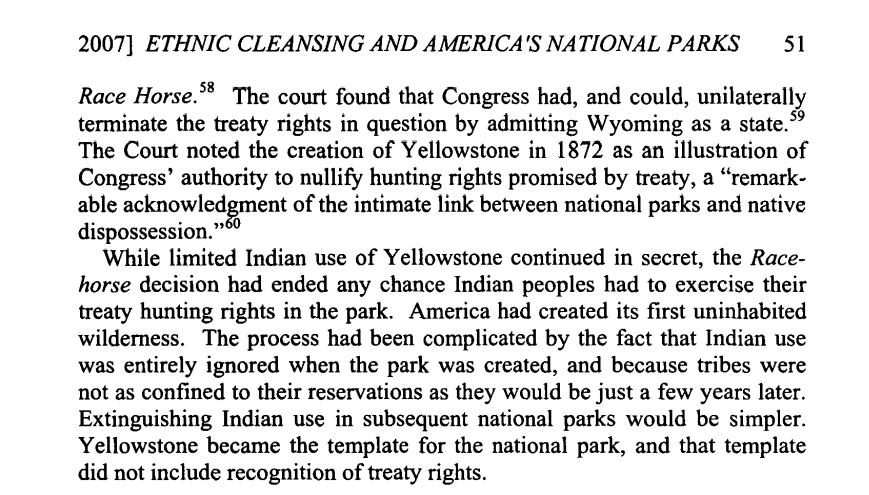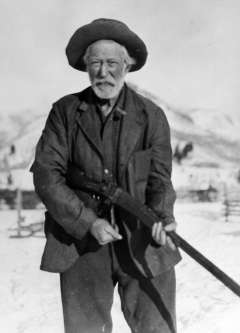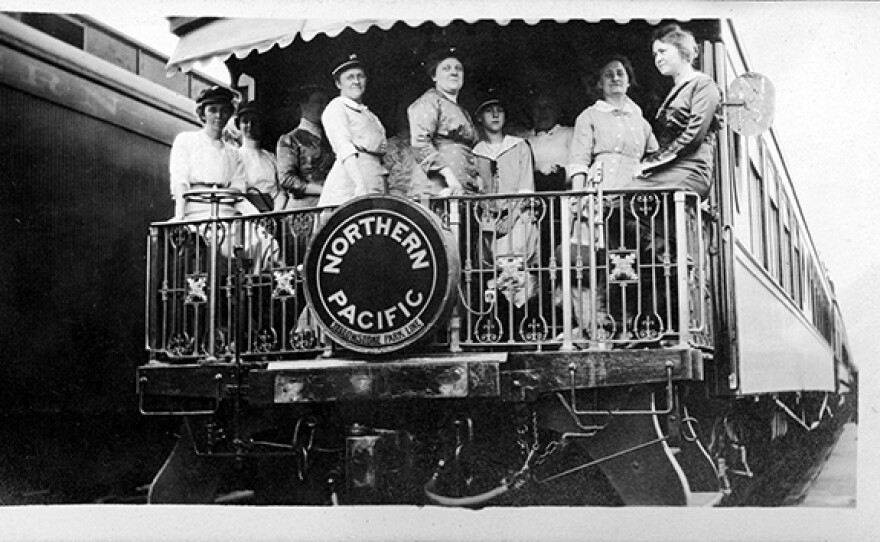After Yellowstone National Park's establishment, Native tribes continued utilizing resources there, like the plentiful food. However, debate sprang up quickly over Natives' hunting rights within borders. Many Euro-Americans believed tribes were opposing everything the park represented by hunting in the park despite these rights being protected by Natives' original treaties. For example, William Manning arrested a tribe of Bannock for violating Wyoming game laws. Similarly, Race Horse, a Bannock leader, turned himself in for breaking game laws, sending him to court. Heard by Judge John Riner, it was decided the original treaties overruled Wyoming game laws, reinstating Natives' rights to hunt within the park. However, about 6 months later, the Supreme Court reversed Judge Riner's decision and overruled the treaties, leading to many tribes' relocation to reservations surrounding Yellowstone.
Another impact of establishing Yellowstone National Park was tourism. When first established, few people visited due to the difficult location and meager accommodations. However, many railroad companies, like the Northern Pacific Railroad Company (NPR), saw a high-profit opportunity, so they expanded their railroad to reach the park. The NPR extended to Cinnabar, near the northern park entrance, and could now comfortably deliver passengers part of the journey. E.H. Harriman, American financier and railroad magnate, met with people from NPR, discussing the growing tourism at Yellowstone. He ordered a railroad line to the western border, built by the Oregon Short Line Railroad. Building began in late 1905, and by June 1907, over half the construction was finished. The line was completed on November 12, 1907. However, passenger service didn't start until the following spring, the first train arriving June 11, 1908. After passenger service began, visitor numbers skyrocketed for years, until usage of these railroads dropped significantly, the tracks being removed in 1981. The higher number of visitors decreased the Native's rights within the park, as the area became more popular and the desire to preserve it rose.
"By 1902, Northern Pacific trains reached Gardiner, adjacent to the north entrance to the park. Tourists boarded stagecoaches in Gardiner to continue their trip through the park."


